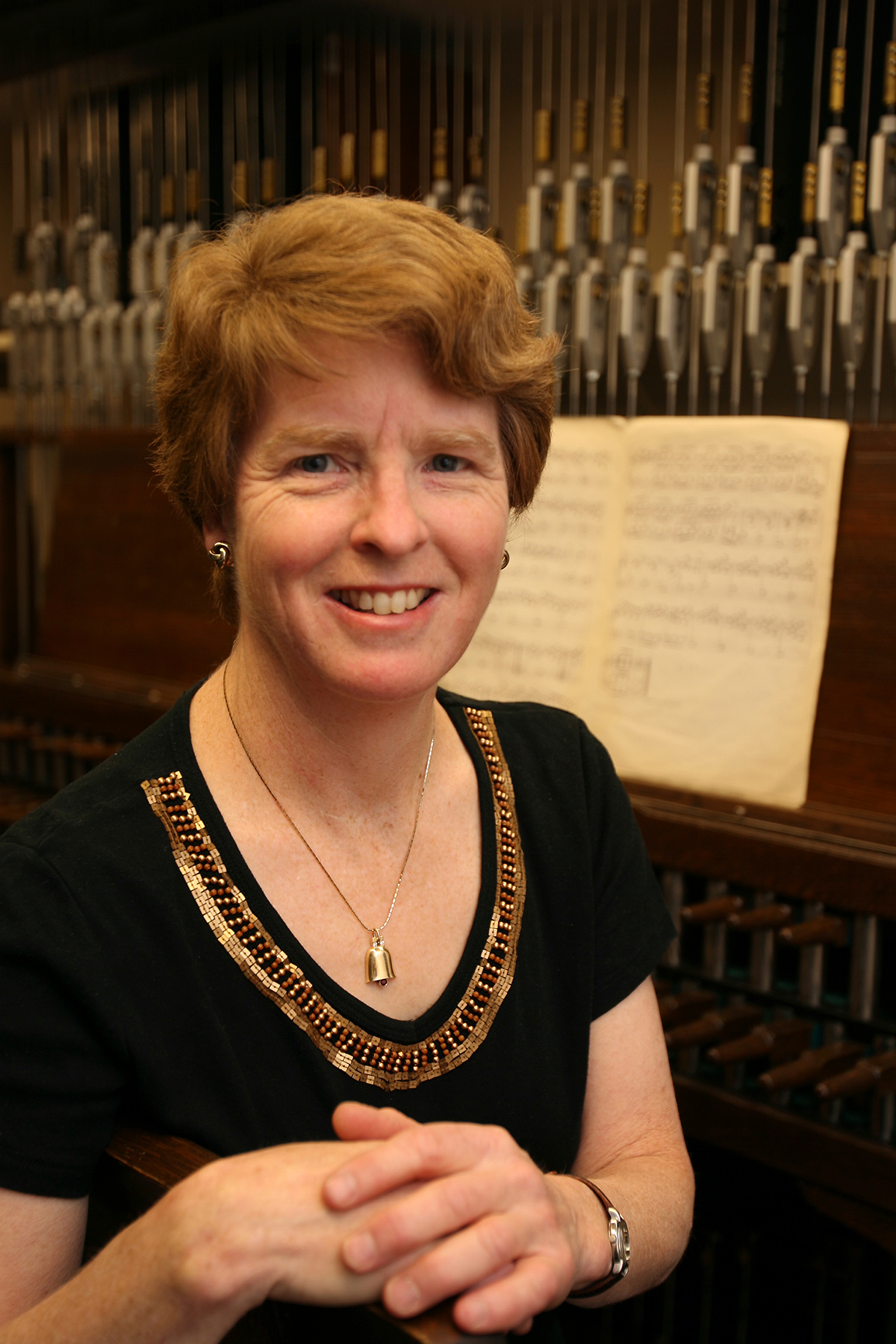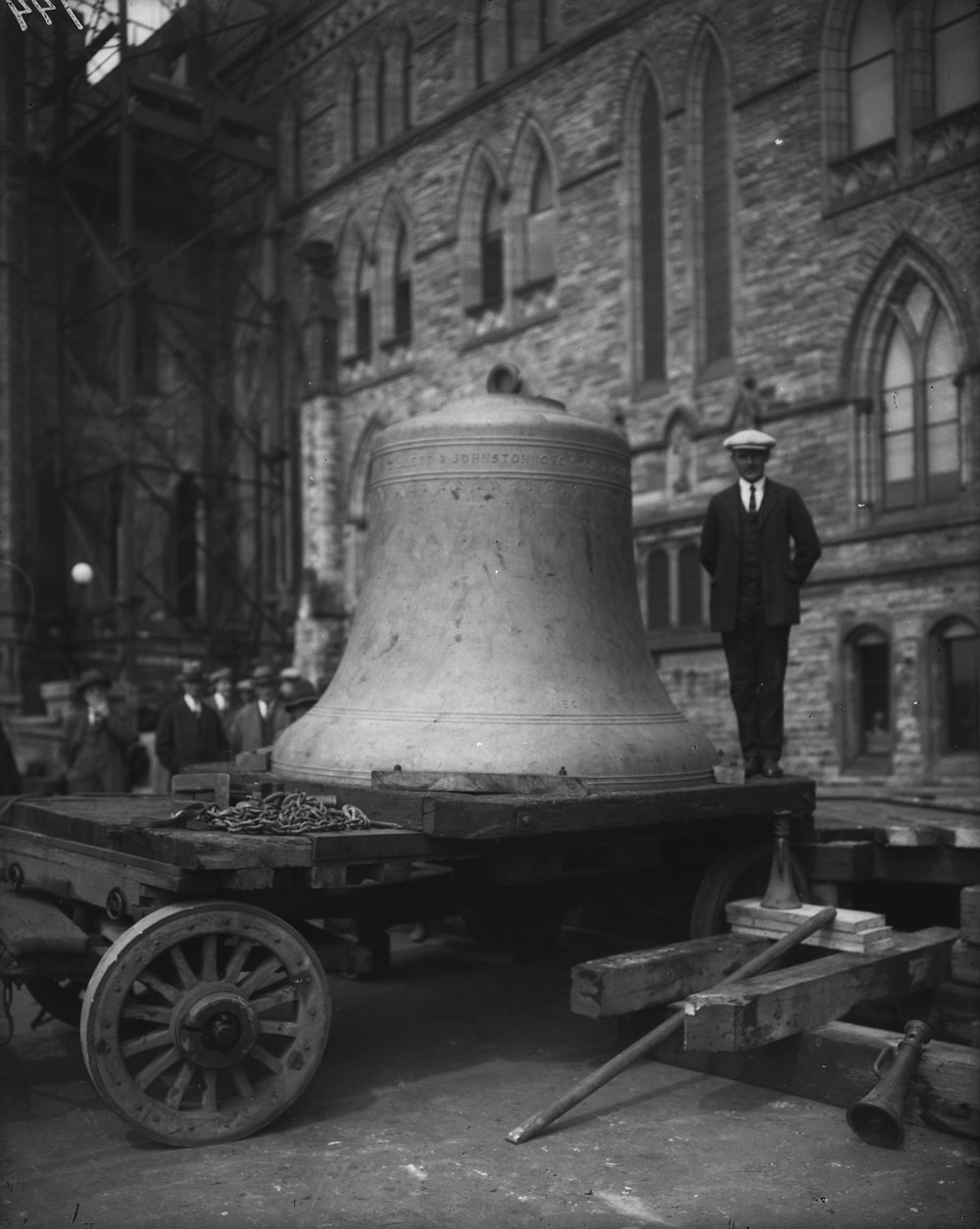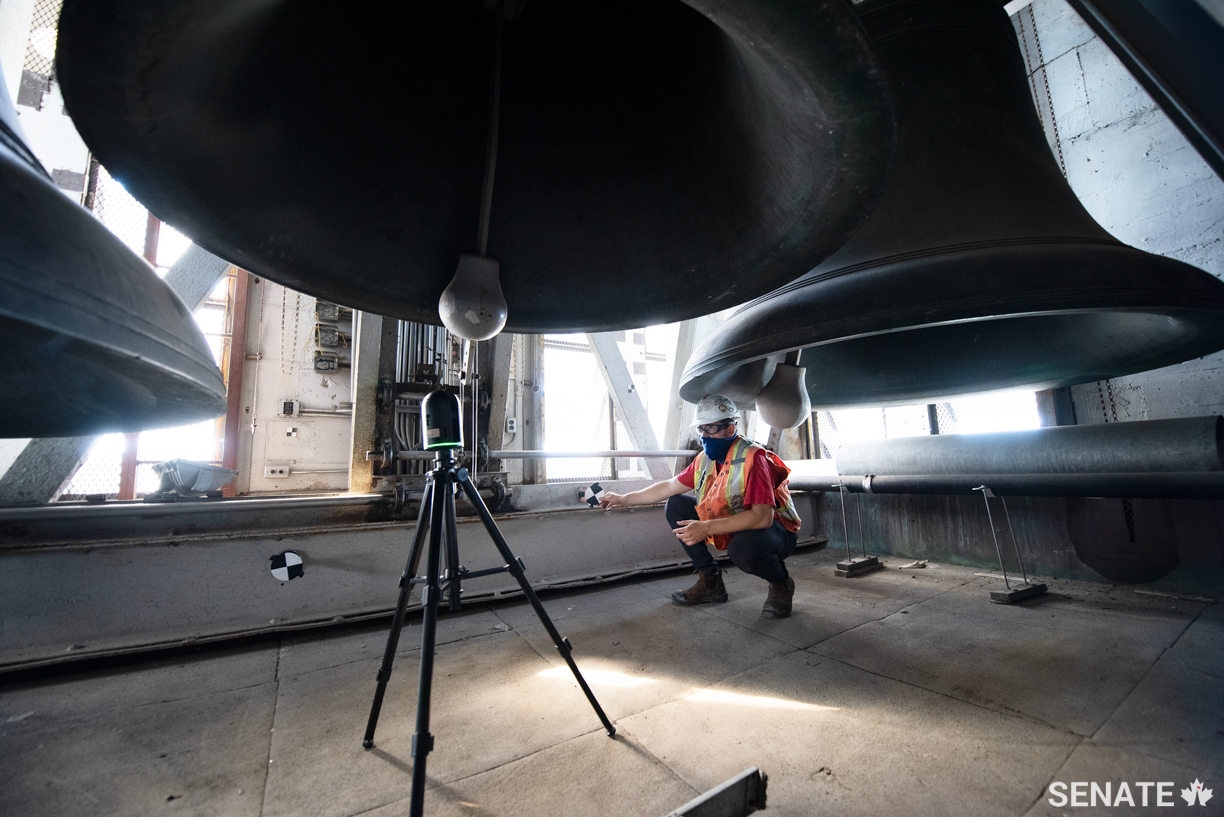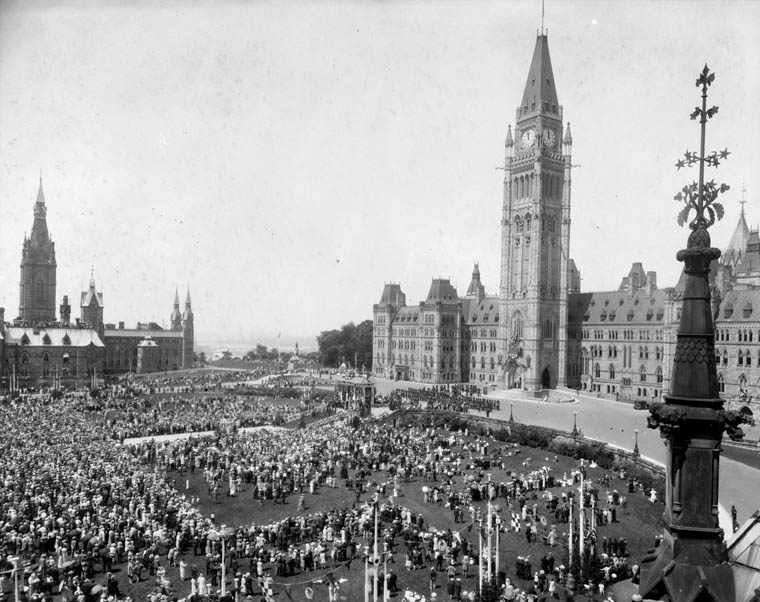Perfect Pitch: The Peace Tower carillon and the senator who proposed it

In February 2019, the Senate moved to the Senate of Canada Building, a former train station built in 1912. The Senate will occupy this temporary location while Parliament’s Centre Block — the Senate’s permanent home — is rehabilitated.
Although Centre Block is shuttered for rehabilitation work, Canadians can still experience its art and architecture through the Senate’s immersive virtual tour.
The Peace Tower carillon has its roots in the Flanders Fields of the First World War, where future senator Lt.-Col. George H. Bradbury became captivated by the crystalline tones of one of the world’s most unusual instruments.
After serving with the 108th Battalion, Canadian Expeditionary Force, Bradbury returned home determined to share the music of the carillon — a huge array of bells played by a musician sitting at a special keyboard and pedalboard — with his fellow Canadians.
And so, three years after his appointment to the Senate in 1917, Bradbury chaired a special Senate committee “to inquire into the cost of the installation in the Tower of Parliament Buildings of a first-class carillon.”
The timing was auspicious. Centre Block was being rebuilt after the devastating fire of 1916 and lead architect John A. Pearson supported Bradbury’s idea, telling the senator that the new Peace Tower would be able to support the weight of the bells.

A century later, the state of the carillon is being assessed as part of the rehabilitation of Centre Block.
Experts from the Netherlands-based Royal Eijsbouts, one of the largest bell foundries in the world, conducted an inspection in late 2019. All 53 carillon bells in the tower remain in excellent condition since their installation in 1927 and do not need major repairs.
A good thing, because the carillon is a complex feat of mechanics.
The carillonneur plays from a tiny room partway up the Peace Tower. Striking a note on the wooden keyboard — which looks more like a series of levers than a traditional piano keyboard — tugs a metal string attached to the clapper of one of the bells, causing the bell to sound. The 53 bells in the Peace Tower carillon correspond to 53 notes; the bigger the bell, the lower the note. The largest bell is an 11-tonne behemoth.
Experts have made recommendations to fine-tune the carillon. The cast-iron clappers, for instance, will be cleaned, refurbished and welded to return them to their original condition.
Dominion Carillonneur Andrea McCrady, who is the first woman to hold that title and just the fifth person to do so, has studied the origins of the Peace Tower carillon.

When Bradbury proposed it, the country was still recovering from the slaughter of the Great War; there was a strong desire to find some fitting commemoration for those who had served. And while some questioned the wisdom of installing a carillon, Dr. McCrady cited old articles from the Ottawa Journal showing that Bradbury had won over a skeptical public.
“When Senator Bradbury first started the advocacy of a carillon there was considerable opposition, but like The Journal, many of these have changed their minds,” the newspaper wrote in 1924.
Indeed, the newspaper found “something unique and appealing in the suggestion that … the memory of the fallen should be perpetuated in the pathos and beauty of music.”
England’s Gillett & Johnston won the bidding war to build the carillon and the first bells began to make their way from Montreal to Ottawa on flatbed rail cars. They arrived at Ottawa’s Union Station, which, by a quirk of fate, is now the Senate’s temporary home while the Centre Block rehabilitation program takes place.
On July 1, 1927, a crowd of 60,000 people packed the Great Lawn in front of the Peace Tower to hear newly minted Dominion Carillonneur Percival Price play the freshly completed carillon.
The resonant notes of “O Canada” tolled out over the throng and right across the country — Price’s performance was aired live in the first-ever cross-Canada radio broadcast. Then-prime minister William Lyon Mackenzie King called the carillon “the voice of the nation.”
Alas, Bradbury never got to experience the triumphant conclusion of his years of work. The senator from Selkirk, Man. had died two years earlier.
“It’s quite sad, actually,” Dr. McCrady said.
“With all his work and proposals, he never got to hear the carillon.”






